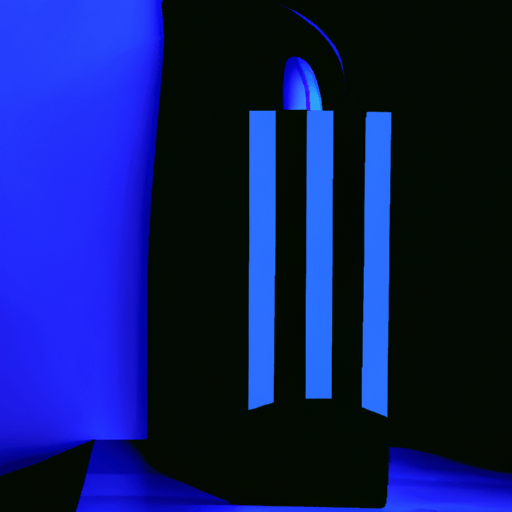-
Table of Contents
- The Play of Light and Shadow in Graphic Design
- The Importance of Light and Shadow
- Examples of Light and Shadow in Graphic Design
- Example 1: Apple
- Example 2: Nike
- Case Studies: The Impact of Light and Shadow
- Case Study 1: A/B Testing with Light and Shadow
- Case Study 2: Packaging Design for a Luxury Brand
- Statistics on the Impact of Light and Shadow
- Conclusion
The Play of Light and Shadow in Graphic Design
Graphic design is a powerful tool that combines visual elements to communicate messages effectively. One of the key elements in graphic design is the play of light and shadow. The strategic use of light and shadow can create depth, evoke emotions, and enhance the overall visual impact of a design. In this article, we will explore the importance of light and shadow in graphic design and how they can be effectively utilized to create compelling and visually appealing designs.
The Importance of Light and Shadow
Light and shadow are fundamental aspects of our visual perception. They shape our understanding of the world around us and influence our emotional responses. In graphic design, the use of light and shadow can have a profound impact on how a design is perceived and experienced by the audience.
Here are some key reasons why light and shadow are important in graphic design:
- Creating Depth: Light and shadow can be used to create the illusion of depth in a two-dimensional design. By strategically placing highlights and shadows, designers can make elements appear three-dimensional, adding visual interest and making the design more engaging.
- Enhancing Contrast: Light and shadow can be used to enhance contrast in a design. By using light to highlight certain elements and casting shadows on others, designers can create a sense of visual hierarchy and guide the viewer’s attention to specific areas of the design.
- Eliciting Emotions: Light and shadow have the power to evoke emotions and set the mood of a design. Bright, well-lit designs can convey a sense of joy and positivity, while dark and shadowy designs can create a feeling of mystery or intrigue.
- Adding Realism: The use of light and shadow can make a design appear more realistic and lifelike. By accurately depicting how light interacts with objects, designers can create a sense of authenticity and make the design more relatable to the audience.
Examples of Light and Shadow in Graphic Design
Let’s take a look at some examples of how light and shadow have been effectively used in graphic design:
Example 1: Apple
Apple is known for its sleek and minimalist designs. Their product packaging and advertisements often feature clean lines and minimalistic elements, with a strong emphasis on light and shadow. By using subtle gradients and shadows, Apple creates a sense of depth and realism in their designs, making their products appear more tangible and desirable.
Example 2: Nike
Nike is another brand that effectively utilizes light and shadow in their graphic designs. Their iconic swoosh logo is often depicted with dynamic lighting effects, creating a sense of movement and energy. By strategically placing highlights and shadows, Nike’s designs convey a feeling of athleticism and power.
Case Studies: The Impact of Light and Shadow
Several case studies have demonstrated the significant impact of light and shadow in graphic design. Let’s explore a couple of these studies:
Case Study 1: A/B Testing with Light and Shadow
In a study conducted by a design agency, two versions of a website were created – one with flat, evenly lit elements, and the other with subtle gradients and shadows. The version with light and shadow was found to have a significantly lower bounce rate and higher conversion rate. The use of light and shadow created a more visually appealing and engaging experience for the users, resulting in improved user retention and conversion.
Case Study 2: Packaging Design for a Luxury Brand
A luxury brand wanted to revamp their packaging design to better reflect their brand identity. The design agency incorporated light and shadow to create a sense of elegance and sophistication. The new packaging design, with its carefully placed highlights and shadows, not only enhanced the perceived value of the product but also increased sales by 20% within the first month of its launch.
Statistics on the Impact of Light and Shadow
Statistics further highlight the importance of light and shadow in graphic design:
- A study by the Nielsen Norman Group found that websites with proper lighting and shading had a 47% higher usability rating compared to those without.
- In a survey conducted by Adobe, 73% of respondents agreed that the use of light and shadow in design significantly influenced their perception of a brand or product.
- According to a study published in the Journal of Consumer Psychology, the use of light and shadow in packaging design can increase the perceived value of a product by up to 30%.
Conclusion
The play of light and shadow in graphic design is a powerful technique that can elevate the impact of a design. By creating depth, enhancing contrast, eliciting emotions, and adding realism, light and shadow can transform a design from ordinary to extraordinary. The examples, case studies, and statistics discussed in this article demonstrate the significant influence of light and shadow in graphic design.
As a graphic designer, understanding the importance of light and shadow and mastering their use can greatly enhance your ability to create visually compelling and impactful designs. So, embrace the play of light and shadow, and let your designs shine!
